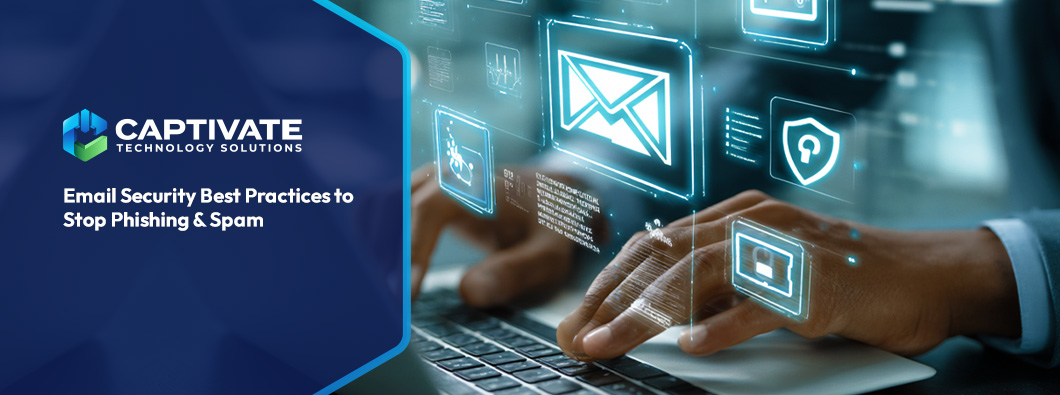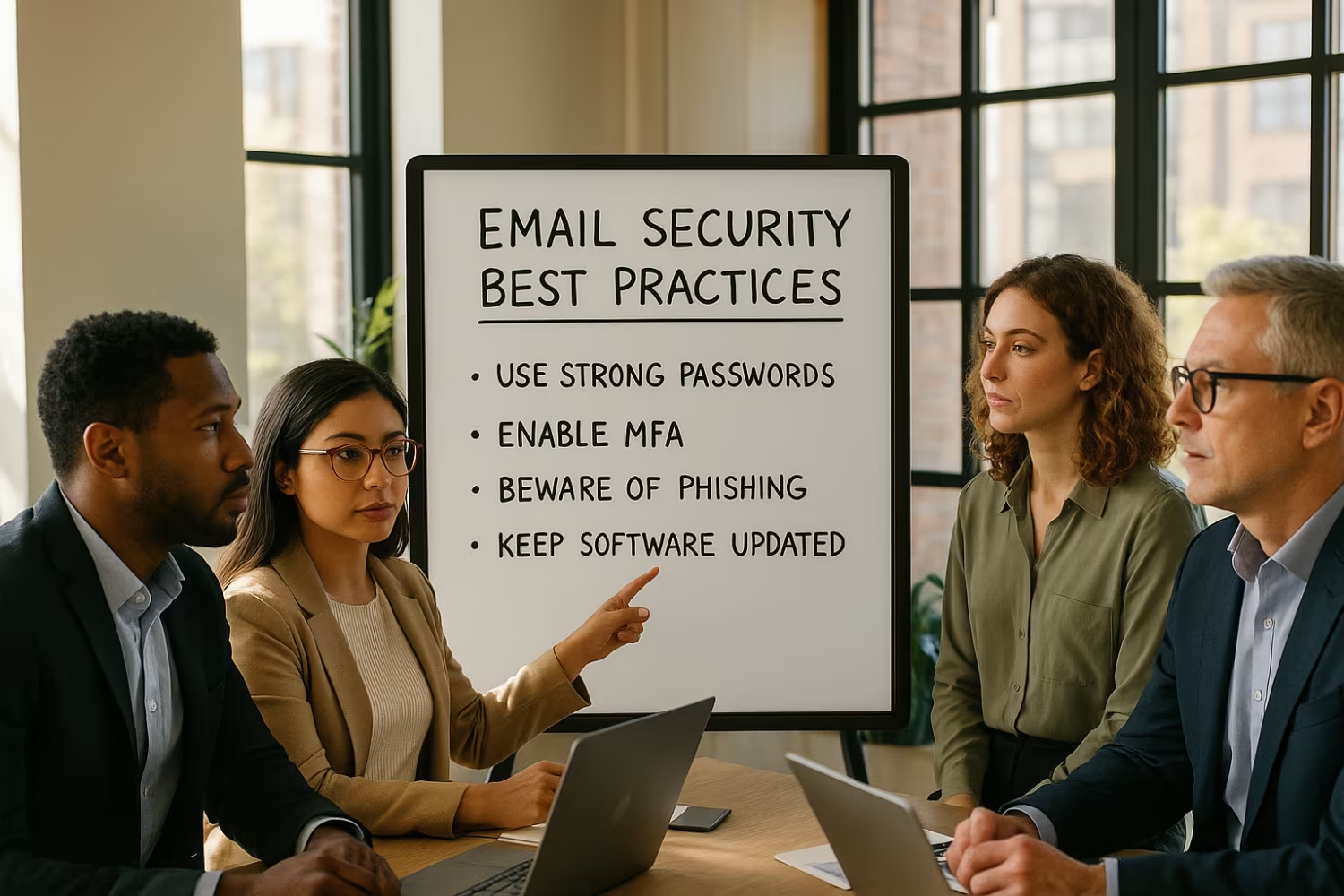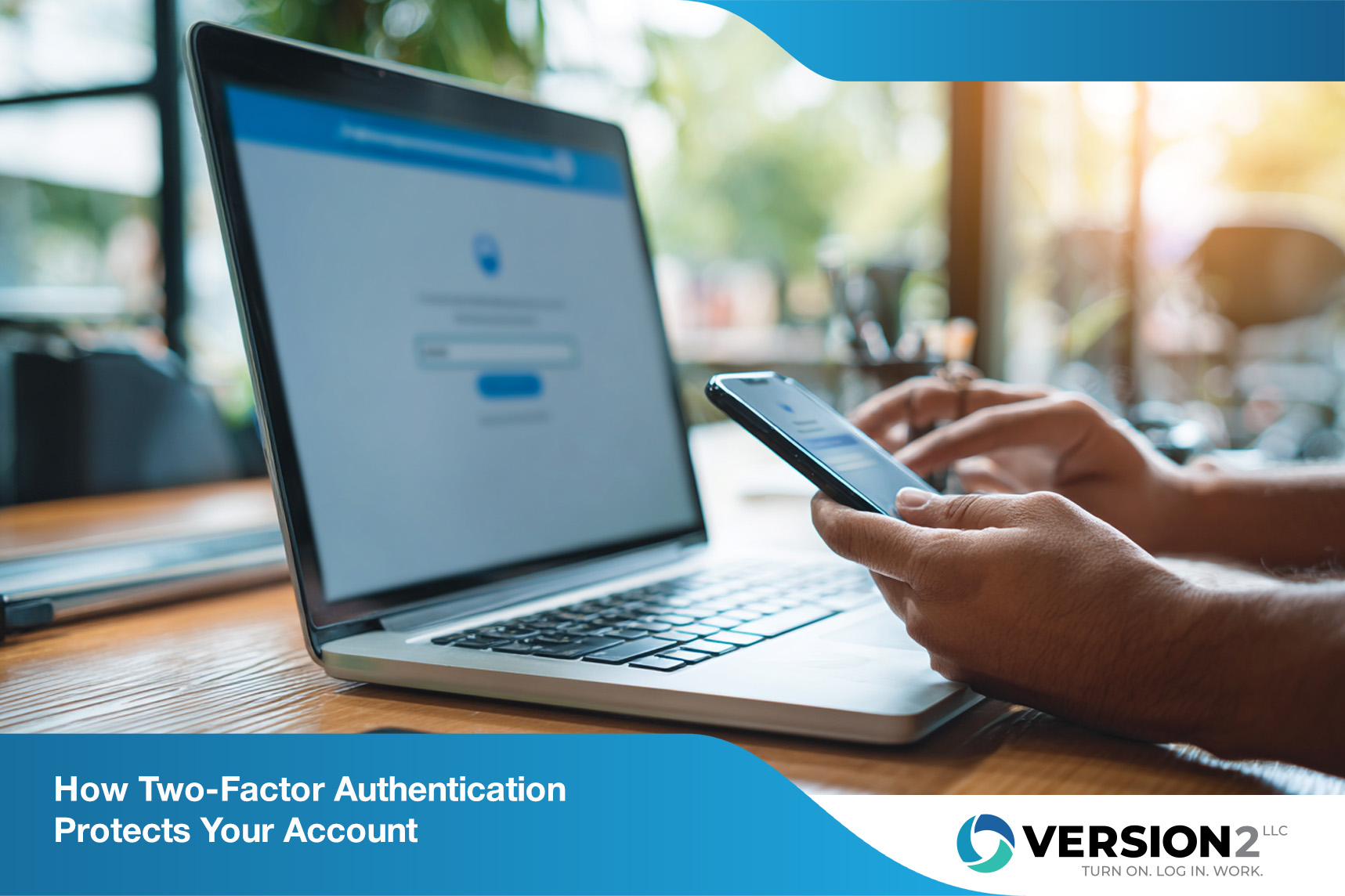
August 12, 2025
Top Data Loss Prevention Strategies to Protect Your Data
Discover DLP tools, causes of data loss, and how to prevent breaches effectively.
November 26, 2025

Email threats are one of the most common ways cyberattacks start. For businesses, especially those growing fast, a single phishing email can lead to major damage. In this blog, we’ll walk through email security best practices that help protect your inbox, your data, and your team. You’ll learn how to spot risky messages, use filters effectively, run phishing simulations, and build a strong incident response plan. We'll also cover how to reduce your attack surface and keep sensitive information safe.
[.c-button-wrap][.c-button-main][.c-button-icon-content]Contact Us[.c-button-icon][.c-button-icon][.c-button-icon-content][.c-button-main][.c-button-wrap]
Email is still the top way attackers try to get into your systems. That’s why email security best practices are essential for any business. These practices help reduce the risk of phishing, malware, and business email compromise (BEC).
Good email security starts with awareness. Your team needs to know how to spot suspicious messages and what to do when they see one. But awareness alone isn’t enough. You also need the right tools—like spam filters and authentication protocols—to block threats before they reach your inbox.
Security best practices also include setting up strong passwords, using multi-factor authentication, and limiting who can access sensitive information. When combined, these steps create layers of protection that make it harder for attackers to succeed.

Let’s break down some of the most effective strategies you can use to protect your business email. These tips are based on real-world threats and what actually works to stop them.
Phishing emails often look real. They might use a familiar sender name or ask you to click a link that seems urgent. Training helps your team spot these red flags. Regular phishing simulations can test their skills and improve their response.
Spam filters do more than block junk mail. They also catch known phishing emails and malware attachments. Make sure your filters are updated often and set to a strict level to reduce risk.
Weak passwords are a major risk. Require employees to use strong passwords and change them regularly. Combine this with two-factor authentication for added protection.
Not everyone needs access to everything. Limit access to sensitive information based on roles. This reduces the damage if one account is compromised.
Set up alerts for unusual login attempts, large file downloads, or unexpected email forwarding. These can be early signs of a breach.
Outdated systems are easier to attack. Regularly update your email platform, antivirus software, and operating systems to close known security gaps.
These authentication tools help verify that emails are really from who they say they are. They also help prevent spoofing and improve your email deliverability.
Here’s what you gain when you follow email security best practices:

Phishing simulations are one of the most effective ways to build awareness. They let you test how your team reacts to fake phishing emails in a safe way. Over time, this helps lower your organization’s click rate on real threats.
Simulations also give you data. You can see who needs more training and which types of email messages are most convincing. This helps you tailor your security awareness efforts and improve overall results.
When an email threat gets through, your team needs to act fast. That’s where an incident response plan comes in. This plan outlines what steps to take, who to contact, and how to contain the threat.
Start by confirming whether the email is malicious. Look for signs like suspicious links, unknown senders, or unexpected attachments.
Once a threat is found, alert your IT or security team immediately. Quick action can prevent the issue from spreading.
If a user clicked a link or opened a file, isolate their device from the network. This helps stop malware from spreading.
Check logs, email headers, and user activity to understand what happened. Document everything for future reference and compliance.
If sensitive information was exposed, notify the affected users or clients. Be clear about what happened and what steps are being taken.
After the incident, review what went wrong. Update your filters, training, or policies to prevent similar issues in the future.

Putting email security best practices into action takes planning. Start by reviewing your current tools and policies. Are your spam filters working? Is your team trained? Do you have a response plan?
Next, choose tools that match your business size and needs. For example, a growing company might need more advanced filtering or simulation tools. Make sure your tools are easy to manage and integrate with your existing systems.
Finally, review your setup regularly. Threats change, and your defenses should too. Schedule periodic audits to make sure your email security stays strong.
Here are some best practices every business should follow:
Following these steps helps reduce your risk and keeps your inbox safer.

Are you a business with 10 to 100 employees looking to improve your email security? As your company grows, so does your risk. You need reliable systems that scale with you and protect your team from real-world threats.
At Version 2, we help businesses like yours build strong email defenses. From setting up spam filters to running phishing simulations, our team provides the tools and support you need. Contact us today to learn how we can help you stay secure.
[.c-button-wrap][.c-button-main][.c-button-icon-content]Contact Us[.c-button-icon][.c-button-icon][.c-button-icon-content][.c-button-main][.c-button-wrap]
Business email compromise (BEC) is when attackers trick employees into sending money or data. Email security best practices help by training staff to spot fake requests and using tools like authentication protocols to verify senders. These steps reduce the chance of falling for scams.
Strong passwords and limited access to sensitive information also help. If one account is compromised, the damage is contained. Regular simulations and alerts keep your team ready to respond.
Phishing simulations are fake phishing emails sent to test your team’s awareness. They help improve cybersecurity by showing how employees react to real-world threats. Over time, this lowers the risk of falling for actual phishing emails.
Simulations also highlight which users need more training. This allows you to focus your security awareness efforts where they’re needed most. It’s a simple way to build a stronger defense.
Spam filters block unwanted or dangerous email messages before they reach your inbox. They use rules and threat databases to catch known phishing attempts, spam emails, and malware.
By filtering out risky content, these tools reduce your attack surface. They also help prevent users from clicking on suspicious links or downloading harmful email attachments.
An incident response plan should include steps for identifying, containing, and reporting email threats. It should also list who to contact and how to isolate affected systems.
Including details like how to handle suspicious links, spoofed sender addresses, or leaked credentials makes the plan more effective. Regular updates and practice drills keep the plan ready.
Common email threats include phishing emails, malware attachments, and spoofed messages. Some aim to steal login credentials, while others spread malicious software.
Understanding the types of email threats helps you prepare better. Use filters, authentication tools, and security awareness training to defend against them.
Improving click rate means fewer people fall for phishing simulations. Start with regular training and awareness sessions. Show real examples of phishing campaigns and explain what to look for.
Track results over time. If certain users or departments struggle, give them extra support. The goal is to build habits that keep your inbox safe.

August 12, 2025
Discover DLP tools, causes of data loss, and how to prevent breaches effectively.

August 5, 2025
Learn how 2FA strengthens security, protects your account, and prevents unauthorized access.
.jpg)
July 29, 2025
Discover how the IT disaster recovery process safeguards your business. Learn essential strategies, key components, and planning steps to minimize downtime and resume normal business operations fast.